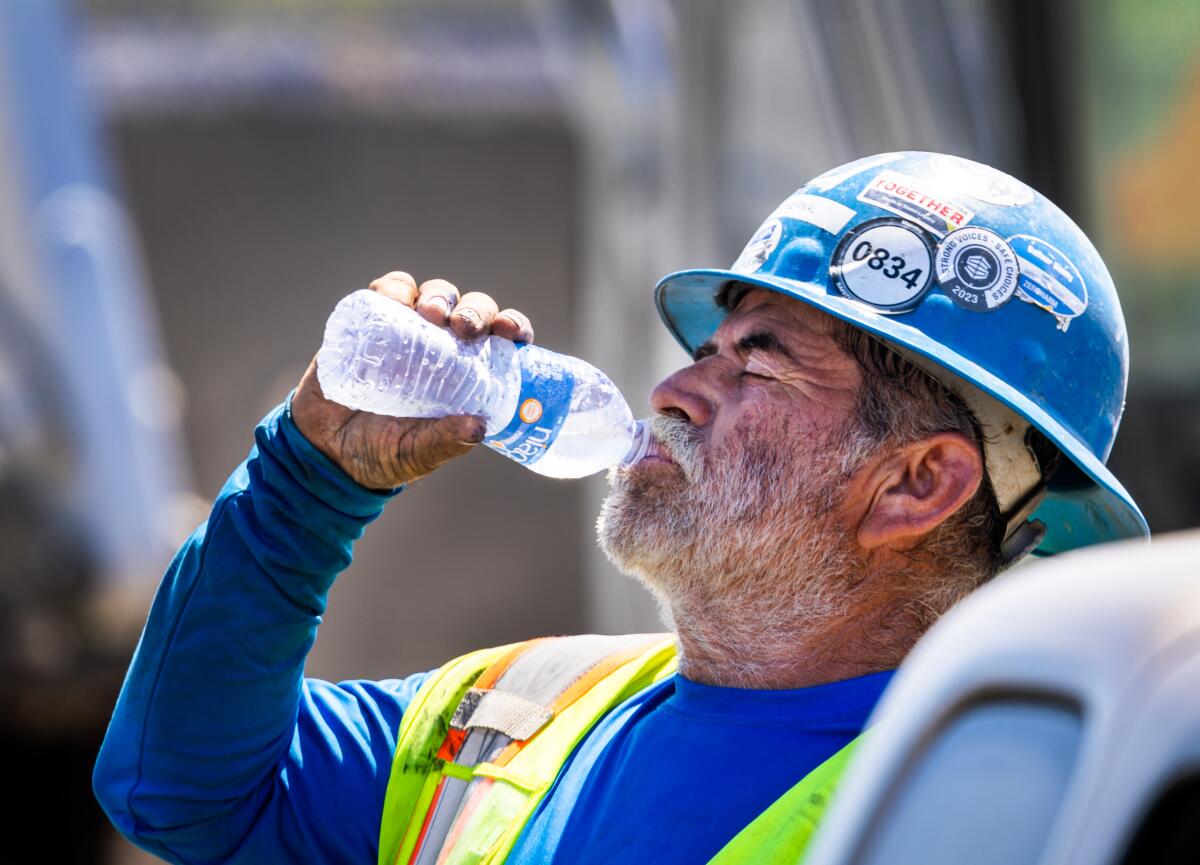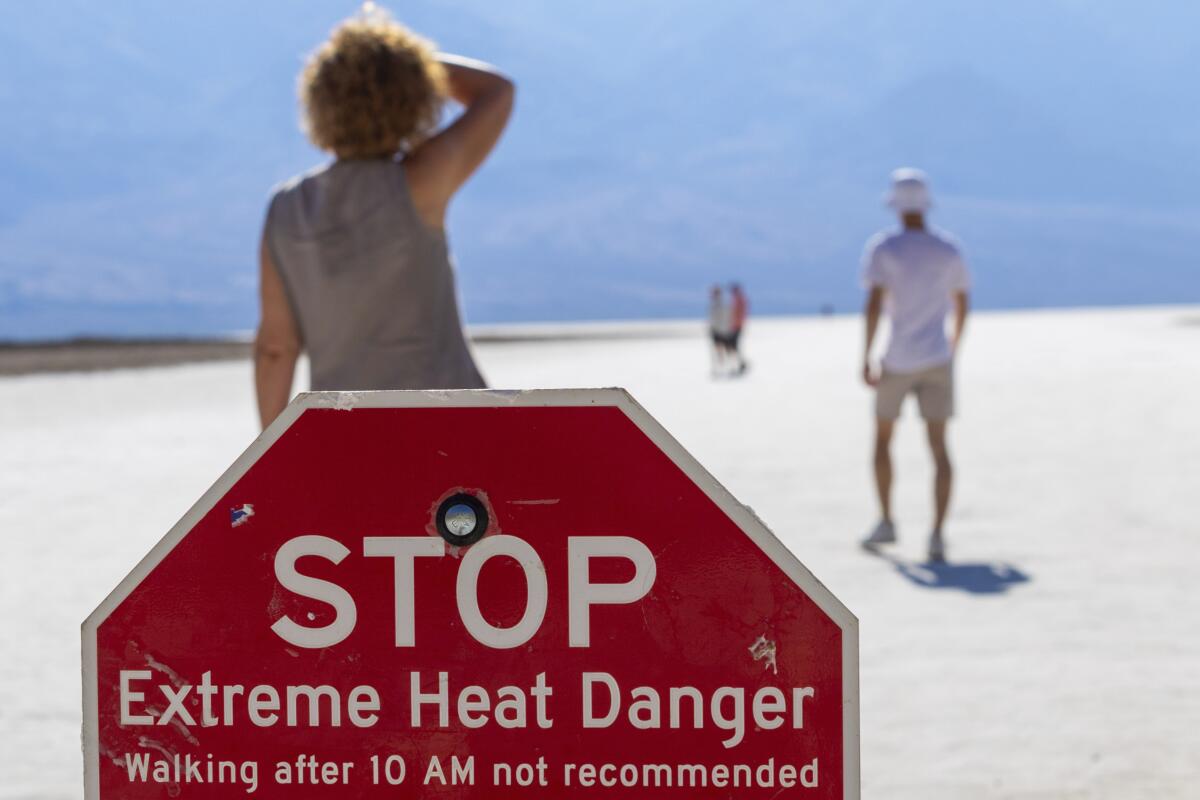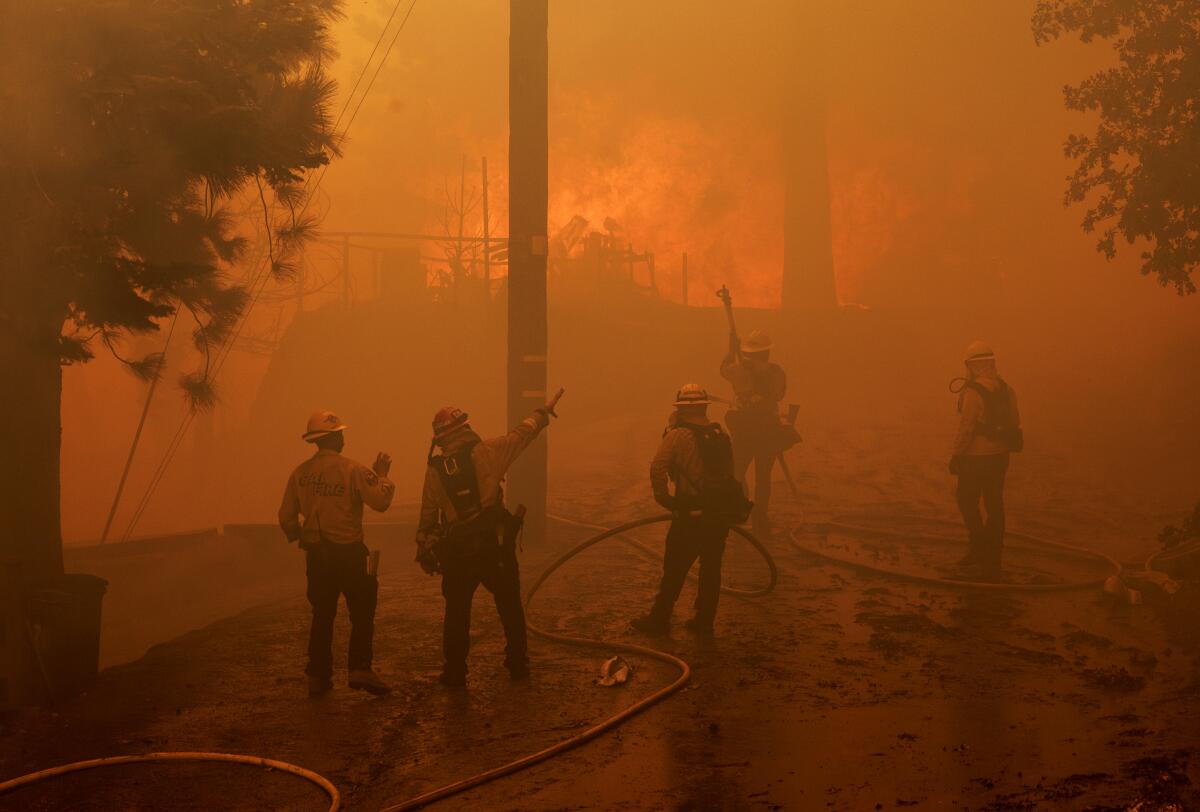Good morning. Here’s what you need to know to start your day.
Autumn is on pause as summer-like heat wave stirs new fire fears in California
Over 1 million acres have burned in California this year, and as an abnormally warm summer-like heat wave pushes temperatures up throughout the state this week, the risk of increased burning remains high.
Heat advisories have been issued across the state, many warning of triple-digit temperatures that have already led to power shutoffs in the north and additional wildfire evacuations in the south.
Though fire season in California typically extends through the fall months, the weather service expects highs in most areas throughout the state to reach 10 to 20 degrees above average for this time of year.
This unusual heat wave will dry out landscapes and drop humidity levels, which officials say can spur easier and faster wildfire growth. Gusty offshore winds breezing through the California coast is an added concern, the weather service said.

A construction worker takes a water break while digging a trench with a shovel amid a heat wave in Irvine on Sept. 5. (Allen J. Schaben / Los Angeles Times)
My colleagues at the Times reported on the soaring October temperatures.Here’s what you need to know.
Will the heat wave affect you?
Temperatures in Southern California are expected to be about 10 degrees above normal, according to the National Weather Service. Today will be the hottest day of the week in parts of Los Angeles County, Todd Hall, a meteorologist with the weather service in Oxnard, told the Times.
Across Southern California, the weather service is warning of “dangerously hot conditions” through Thursday. Some expected high temperatures this week include:
- Up to 107 degrees in the San Fernando Valley, the Santa Clarita Valley, the Antelope Valley foothills and the 5 Freeway corridor
- Up to or over 100 degrees in much of the Central Valley
- Up to 115 degrees in Death Valley
- Over 104 degrees in parts of the Bay Area

A person wipes sweat from their brow at Badwater Basin in Death Valley National Park. (Ty ONeil / Associated Press)
For the western San Gabriel Mountains — where the Bridge fire erupted last month — and the 14 Freeway corridor specifically, the weather service announced a red flag warning through Thursday, saying that “hot and unstable conditions” could rapidly advance fire spread. An additional fire watch was issued for the interior mountains of San Luis Obispo County and Santa Barbara County for today and tomorrow.
Up north in Shasta County, about 1,100 customers — 9,000 on Monday and 200 on Tuesday — experienced a planned Pacific Gas & Electric shutoff, Paul Doherty, a spokesperson for PG&E said. The company had warned earlier that it would cut power to residents facing dangerous fire weather, especially “high winds and dry conditions,” to minimize the risk of fires erupting.
Wildfire risk continues
The Line, Bridge and Airport fires that burned a total of 122,500 acres in Southern California are respectively 76%, 98% and 95% contained. However, on Sunday, with excessive heat in the area, authorities issued additional evacuations and warnings because of flare-ups on the Line fire in San Bernardino.
The flare-up intensified Monday, expanding evacuation orders and causing firefighters to lose some ground on containment.

Firefighters can do little to save an engulfed home as the Line fire burns into a tree lined neighborhood on Sept. 10 in Running Springs. (Gina Ferazzi / Los Angeles Times)
The high-risk weather this week could create conditions that spark “plume-dominated fires,” identified by tall plumes of smoke that become dangerously hot, which could potentially cause fires to grow erratically, Bryan Lewis, a weather service meteorologist in Oxnard, told The Times.
Throughout California, the weather service’s Climate Prediction Center expects temperatures to remain above-average until at least mid-October, stretching across the Southwest as forecast in parts of Arizona and Nevadaare already hitting record-high daily temperatures.
But beyond fire hazards, meteorologists and experts are warning of health risks caused by excessive heat. So, drink plenty of fluids, stay indoors in an air-conditioned room if you can, otherwise stay in the shade and follow safety measures to stay cool during high temperatures.
Read more
Today’s top stories

JD Vance, left, and Tim Walz on the debate stage Tuesday night in New York. (Matt Rourke / Associated Press)
Vance and Walz kept it polite — with a few jabs — in VP debate
- Republican JD Vance and Democrat Tim Walz engaged in a remarkably civil vice presidential debate Tuesday night, with both sides claiming they represent the change Americans are seeking.
- Didn’t watch the debate? You can find five big takeaways here.
- Here’s a look at how Vance and Walz differed from their running mates on immigration.
- And Times columnists discussed the best and worst moments of the debate as they happened.
- In other election news, CBS News said Trump dropped out of a “60 Minutes” interview after accepting an invitation.
Sean ‘Diddy’ Combs faces sexual abuse and exploitation allegations from 120 people, including minors
- More than 100 people, including some who were minors at the time of the alleged abuse, are planning to file lawsuits against Combs in New York and California, according to an attorney.
- The impending lawsuits come after federal prosecutors last month charged the hip-hop music mogul with sex trafficking, racketeering and transportation to engage in prostitution.
- Combs has pleaded not guilty and has been in federal custody since his arrest on Sept. 16.
California sued a hospital that denied a woman an emergency abortion last year
- Providence St. Joseph Hospital in Eureka is accused of violating multiple state laws by denying a woman an abortion after she experienced a dangerous complication.
- The case exposes gaps in abortion care in California, home to the nation’s strongest reproductive rights protections, where abortion access is enshrined in the state Constitution.
Ranking California’s best and worst cities for retiring
- The Times ranked 367 California cities on livability, affordability, climate and more to determine which were the best and worst for retirement.
- The best? Eureka, a major city on the state’s north coast with a population of about 30,000.
What else is going on
No comments:
Post a Comment